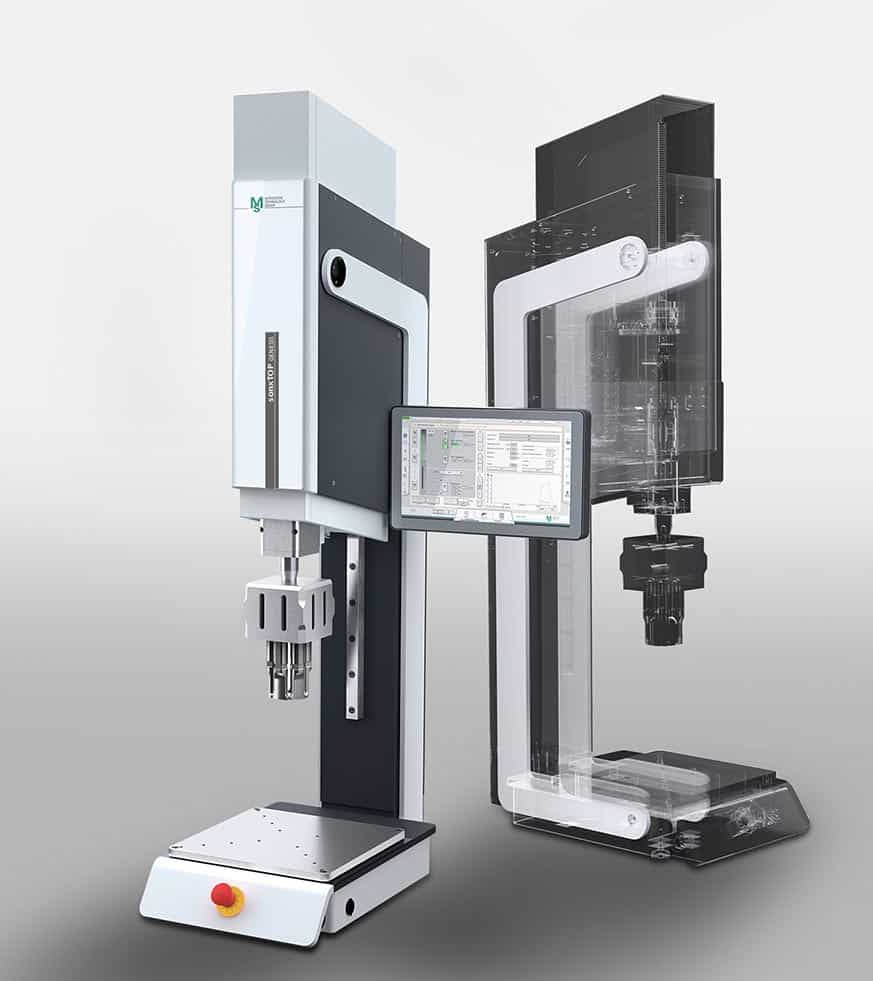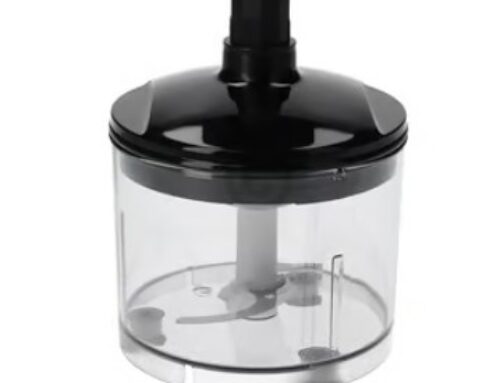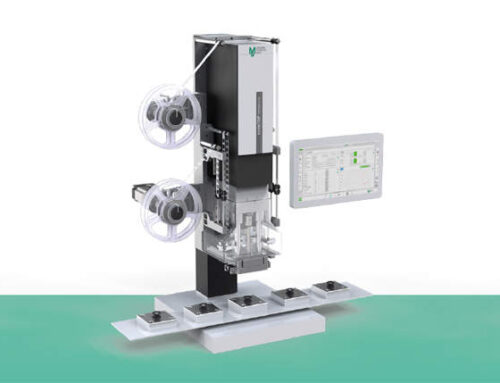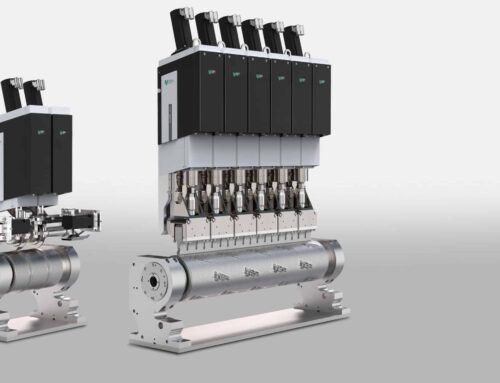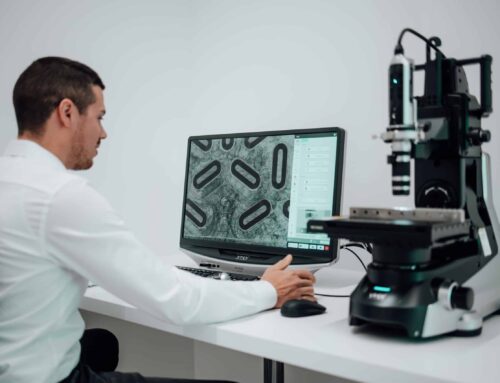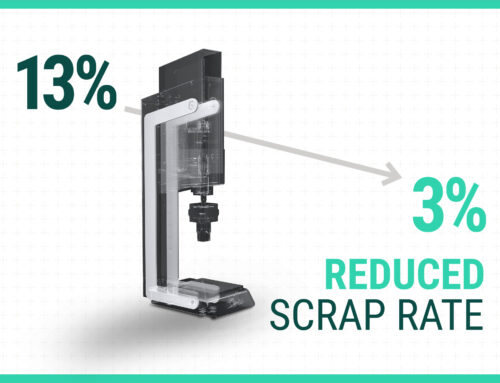How an Ultrasonic Plastic Welding Machine Works
At MS Ultrasonic Technology Group, we have over half a century of experience offering quality equipment solutions to clients worldwide in industries ranging from medical and automotive to food and consumer goods. Our MS sonxTOP series and related machines combine innovative technology with the efficiency of the ultrasonic plastic welding process to deliver accurate, clean welds that fulfill myriad needs. Read on to learn how an ultrasonic plastic welding machine works, ultrasonic plastic welding basics, and more.
What Is Ultrasonic Plastic Welding?
The ultrasonic plastic welding process achieves a solid-state weld by heating the interfacing joint surfaces of two thermoplastic parts through high-frequency ultrasonic vibrations. The ultrasonic energy range of 20 to 50 kHz generates low-amplitude mechanical vibrations of 1 to 25 μm that then create the necessary heat for the process. It’s a highly efficient technique that takes milliseconds to cure, allowing for fast fabrication and precise, reliable joints.
Benefits
The ultrasonic plastic welding process offers several key advantages, including:
- High Speeds. These systems use a horn to transmit ultrasonic vibrations at high frequencies, allowing for efficient melting and joining. With the cooling process occurring in milliseconds, ultrasonic plastic welding can reduce turn times by enhancing efficiency and productivity.
- Clean, High-Quality Welds. Ultrasonic plastic welding equipment applies minimal heat to a surface and only within a highly localized area, safeguarding thermoplastics against deformation and plastic flash. This results in a highly precise, quality weld that necessitates minimal finishing and leaves behind virtually no visible seam.
- Improved Safety. As this concentrated energy also dissipates rapidly, the welding process helps prevent heat damage to nearby machinery within your facility. MS Ultrasonic’s equipment also incorporates safety features like remote monitoring and real-time error detection through our app.
- Optimal Versatility. The ultrasonic plastic welding process is compatible with a wide range of thermoplastics and gives you the flexibility to join parts of various shapes and material thicknesses. MS Ultrasonic offers various customization options, as well.
- Lower Operational Costs. Incorporating automation into your processes with ultrasonic plastic welding reduces labor expenditures due to there being little human-machine interaction. You also save on material costs as this welding method doesn’t require connective materials like adhesives or solder, and its precise nature helps you reduce scrap waste and part rework.
Applications
The benefits of ultrasonic plastic welding make this process ideal for a range of applications, some of which include:
- Medical Products. This welding method offers biocompatibility and precision repeatability for creating tight-tolerance parts that meet cleanroom requirements and the industry’s strict quality standards. By generating clean welds that resist degradation, the process minimizes the risk of contamination in producing everything from pipettes and gas or blood filters to sterile PPE like gowns and masks.
- Automotive Components. Ultrasonic plastic welding is ideal for high-volume auto parts manufacturing. Our MS sonxTOP series has the precision to effectively assemble both small and large components from vehicle keys to door and instrument panels.
- Packaging Solutions. You can join packaging materials using ultrasonic plastic welding to form a full barrier, even on heat-sensitive products. The welding technique is an optimal choice for these applications because of the absence of adhesives that could otherwise degrade in high-temperature environments.
How Does an Ultrasonic Machine Work?
Ultrasonic plastic welding machinery creates strong joints through the following steps:
- The process begins with the setup stage, securing two thermoplastic workpieces within the machine’s nest or anvil fixturing.
- Horn Contact. Also called a sonotrode, the horn touches the upper workpiece and directs it toward the nest or anvil so that it will be in place for the next step.
- Pressure Application. The servo-electric drive applies force to the prepped horn and fixturing. This allows for extremely fine control of applied pressure and offers even higher accuracy than pneumatic drive welds.
- The horn experiences vertical, high-frequency mechanical vibrations, with the vibration energy of 20 to 50 kHz transferring to the workpieces. As this produces heat at the weld interfaces, the thermoplastics fuse together.
- After the weld period, the machine ceases its vibrations but continues to hold the two welded parts together as they cool and achieve a strong, solid-state weld.
- Finally, the machine eases the pressure and retracts the horn to allow you to take the finished component from the nest or anvil.
Ultrasonic Plastic Welding Machines From MS Ultrasonic
In operation since 1965, MS Ultrasonic offers high-performance standard and custom ultrasonic plastic welding machines and accessories that generate strong, repeatable welds as part of scalable production. We design and build our machines in-house utilizing patented, easy-to-operate technology that allows for unrivaled precision and tooling positioning within 10 microns.
Our team prioritizes functionality in our equipment designs. Our intuitive MS sonxTOP series and related equipment enable fast, toolless changeovers and production through Industry 4.0 digital controls, remote capabilities, and automation. Also, our adaptable machines and unique sequencing software package integrate right into your existing production line. To learn more about our turnkey equipment solutions and how they can support your operation, contact us today.

